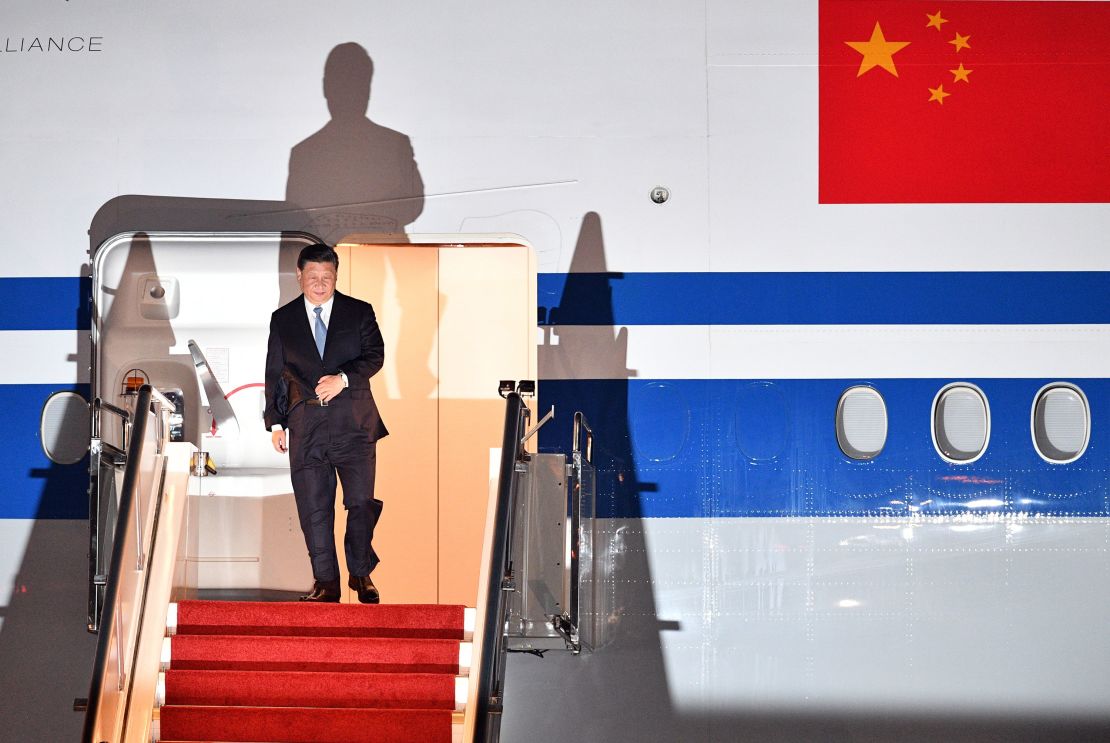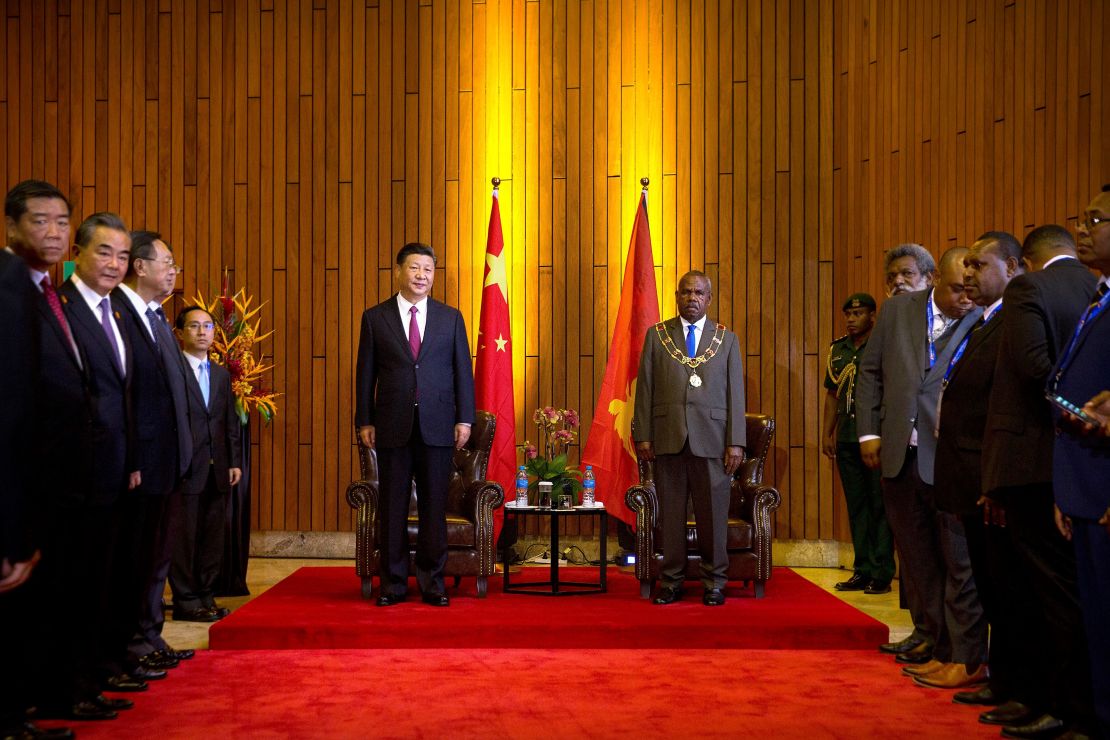Chinese President Xi Jinping kicked off a packed itinerary in Papua New Guinea Friday at the start of a tour which marks Beijing’s latest diplomatic foray into a region once considered outside of China’s sphere of influence.
Xi, who will attend the 2018 APEC summit in the PNG capital Port Moresby, will then continue on to Brunei and the Philippines, both important claimants in the hotly contested South China Sea.
Facing an increasingly hostile US government, pushing back on issues of security and trade, the Chinese government has been attempting to build bridges with regional powers.
“There’s maybe a sense that China’s feeling a bit on the defensive at the moment,” Euan Graham, senior fellow at Sydney’s Lowy Institute, told CNN.
Xi’s visit follows a strong push back against Chinese moves in the South China Sea by Washington, which has stepped up naval operations, warning China it views the widely-disputed territory as international waters.
In the Pacific, Australia announced plans to build a joint naval base with Papua New Guinea in early November, as well as a new development fund implicitly challenging China’s efforts to make inroads with Pacific nations.
“It’s time to open, I believe a new chapter in relations with our Pacific family … This is not just our region, or our neighborhood. This is our home,” Australian Prime Minister Scott Morrison said in a speech on November 8.

‘I love Xi Jinping’
Until recently, relations between China and the Philippines had grown closer under President Rodrigo Duterte, who was keen for the economic benefits China could bring.
In April, on his way to a Chinese forum in Hainan, Duterte told reporters that his country needed China, adding “I love Xi Jinping.”
The Philippines and China have even been negotiating a joint exploration agreement in the South China Sea, an agreement which, if signed, would implicitly recognize Beijing’s widely-contested claims in the region.
But six months later, Graham said relations between the two countries have cooled off, prompting Xi’s visit in an attempt to repair ties.
“I think there’s a realization (in Manila) that what’s pledged from China is usually a fraction of what’s actually delivered in the end,” he said.
Both China and the Philippines are claimants to islands located in the South China Sea, a wide stretch of ocean through which a huge amount of the world’s trade travels every day.
Efforts to smooth over relations with Manila come as Beijing is pushing for a code of conduct with southeast Asian nations which would help solidify Chinese control over the important stretch of ocean.

Chinese Premier Li Keqiang said on Tuesday he hoped to see a final code of conduct within three years, saying a widely-circulated draft was “an indication that China and ASEAN have reached consensus on ensuring peace and stability, freedom of overflight and navigation in the South China Sea.”
But the United States has made it clear it won’t tolerate Beijing’s control of the South China Sea. Speaking beside his Chinese counterparts at the US-China Diplomatic and Security Forum in Washington on November 9, US Defense Secretary James Mattis said there would be no lessening in the number of US freedom of navigation operations.
“The US will continue to fly, sail and operate wherever international law allows. The US commitment to a free and open Indo-Pacific, one that is underpinned by a rules-based international order and regional stability, is unwavering,” he said.
Billion-dollar diplomacy
Reports in April that Beijing had signed an agreement with Vanuatu to found a military base sparked horror inside the Australian government. If true, it would leave the People’s Liberation Army on Australia’s doorstep.
Since then, Australia has dramatically upped its public profile in the Pacific Islands. On November 8, Prime Minister Morrison announced a $2 billion infrastructure initiative for Australia’s Pacific neighbors.
“The world is changing, it’s true and we need to ensure that our Pacific partnerships get stronger with time, that we never take them for granted, that we are a reliable and steady member of the family,” Morrison said during the announcement.
But the Chinese government isn’t giving up on its ties to the Pacific, where it has made substantial diplomatic inroads through loans and aid.
During his time in Papua New Guinea, Xi is expected to meet with the eight leaders of Pacific Islands who have diplomatic relations with Beijing.
In an opinion piece published in Papuan newspapers on Thursday, Xi hailed Beijing’s close relationship with the Pacific.
“The Chinese often say, ‘Distance cannot separate true friends who remain close even when thousands of miles apart.’ The vast Pacific Ocean is indeed a bond between China and Pacific island countries,” the article said.
Graham said despite the last minute push by Australia to make up for lost ground, it was facing an uphill battle against the much wealthier China
“Australia will never have the same level of influence it did 20 or 30 years ago but the best it can do is try to make up for lost time and lost ground,” he said.

















